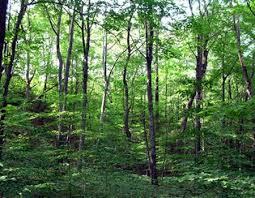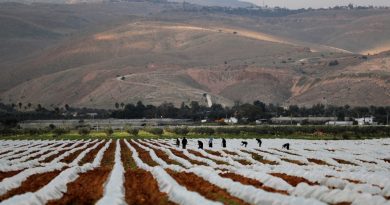Where is the Nexus? — Economic Confidential
Climate Change and Forest: Where is the Nexus?
By Olanrewaju Rukayat I
Climate change is emerging as the greatest environmental challenge in the 21st century. This phenomenon is so important that the United Nations Sustainable Development Goals (SDG) have a goal (goal 13) targeted to combat climate change and its impacts.
In recent times, environmentalists around the world have been clamouring for tree planting and reducing deforestation as a way to reduce climate change. The past few years have witnessed numerous articles advocating for afforestation as a solution to climate change mitigation.
However, there is a general assumption that everyone on planet earth knows what climate change is as well as the relationship that exists between climate change and the forest. This is however not the case, therefore this piece aims to elucidate the relationship between climate change and the forest.
Climate is the regular pattern of weather condition of a particular place over a period of 30-35 years. Weather is the condition of the atmosphere with respect to weather parameters at a particular place and time. Weather parameters such as temperature, wind, rainfall, humidity, sun intensity and many more form the basis of climate.
Technically, climate is the average variation or differences in weather parameters over an extended period of time. Weather parameters changes and varies from day to day and so does the climate.
Implicitly, changes in weather conditions over time results in changes in climate. Variation or changes in climate refers to significant changes in weather parameters over several decades. The word ‘climate change’ describes the abnormal variations in climate and the effects of the variation on other parts of the earth. This occurs when long term weather patterns are altered.
Earth is a system of interconnected network of components viz the atmosphere, the forests, the water bodies, the ice glaciers and land surface. These components work together to make the system. They interact with and influence one another in various ways. The atmosphere serves as a shield that controls light rays entering the earth system.
The atmosphere especially the ozone layer runs interference between forest and land surface and the sun. Forests mediates transfer of water from soil to the atmosphere directly and indirectly influencing rainfall intensity and distribution through their role in the water cycle.
On one hand, forests influences climate by radiating light energy back into the atmosphere, influencing the evaporation and horizontal air movement across land surface and on the other hand, climate influences the distribution and types of vegetation in the “Earth” systems.
Forests play a two-fold role in climate change. They serve as a cause and solution of green-house gas (GHG) emission. Forests influence climate through the surface albedo, evaporation, transpiration and emission of hydrocarbons. Through the process of evapotranspiration, forests contribute to the moisture and rainfall pattern on land surface.
Forests also have a cooling effect on climate through uptake of CO2 and they affect the temperature, moisture and heat fluxes between land surface and atmosphere. Forests influences the concentration of greenhouse gases (GHG) most especially carbon because forest trees serves as carbon sinks converting inorganic carbon found in the atmosphere into organic carbon stored in their biomass.
This reduces the greenhouse gas (GHG) loaded in the atmosphere, allowing more of the reflected infrared rays from the earth surface to escape to outer space. An increased concentration of greenhouse gases (GHG) results in more infrared rays being reflected back into the lower atmosphere and land surface thus increasing the temperature on Earth causing a phenomenon known as global warming.
The loss and degradation of forest cover is both a cause and an effect of climate change. Deforestation, which is the permanent removal of trees and forest degradation, releases the carbon back to the atmosphere causing global warming. They also amount to about 12.5% of global GHG emission.
The loss of forests will result in the inability of the forest to play its role in climate regulation. As witnessed in recent times, emission of CO2, Methane, Ozone, Chlorofluorocarbons and other GHGs has resulted in drastic changes in regional and global climate. These have multiplier effect on livelihood of many people in the world.
The disruption in the earth system has resulted in biodiversity loss, erratic weather conditions, reduced agricultural productivity, and frequent occurrence of natural disasters (wildfires, drought, flood etc.) amongst others. The feedback effect of climate change on the remaining forest can be seen in reduced biomass accumulation, drought, die off and frequent wildfires.
Forests are stabilizing force for the climate. In order to build earth resilience to climate change, trees and forests should be part of the solution to minimising climate change. . They play a great role in ecosystem regulation, biodiversity protection, and a major player in carbon cycle, oxygen cycle, and water cycle.
Reducing the loss and degradation of forest ecosystem and promoting forest restoration can contribute to the mitigation of climate change. Annually about one-third (2.6 billion tonnes) of the CO2 released from fossil fuel combustion is absorbed by forests. In addition forest serves as livelihood source for about 25% of the world population (about 1.6 billion people), provides goods and services, and houses 80% of the world terrestrial biodiversity.
Reduction of deforestation and forest degradation will cut down GHG emissions, sequester carbon, and provide ecosystem services that will mitigate the effect of climate changes on human and the earth environment. Deforestation and forest degradation can be combatted through forest landscape restoration, massive afforestation, forest and agricultural policy reforms, and encouragement of community ownership of forests.
In conclusion, forests and climate change are interlinked. They both influence one another and the loss of forests is a major causative factor of climate change. In order to attain the target of an annual average global temperature increase of less than 2oC, deforestation, forest degradation, forest restoration and reduction of GHG emission is key. By reducing deforestation and forest degradation and increasing forest cover, we reduce climate change and increase the resilience of the earth system.
Olanrewaju, Rukayat I. is a doctoral student of Forest Management at the University of Ibadan, Nigeria


